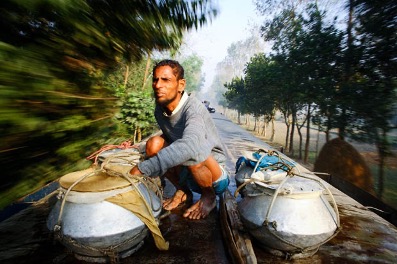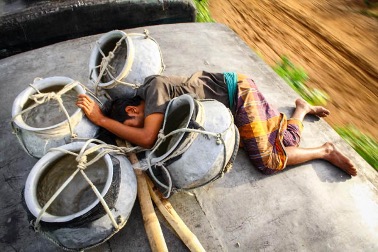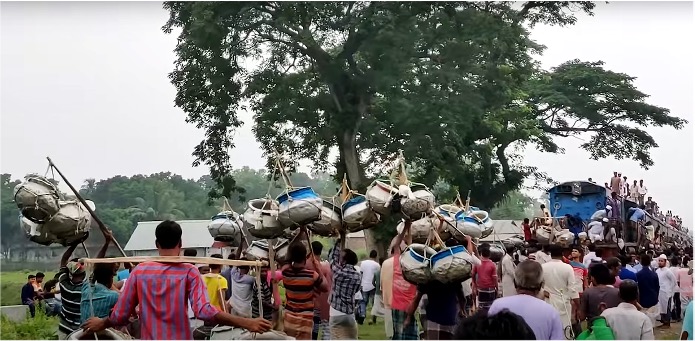Last year when the pandemic was surging high, I was playing a rather morbid mind game— “if I die within two hours, what would my last wishes be”. Every single time I tried to answer, I found that my last wish-list always included fish curry, that I would like to eat before my happy death!
There is a saying used so much in daily Bengali conversations that perhaps it has lost its meaning or is just outdated. People of Bengal always say, “Machey bhatey, Bangalee”, that is, a Bengali is always with fish and rice. There is also a popular derisive adage in the Indian subcontinent about Bengali folks. Outside of Bengal, people often joke, “Bengalis eat fish and smell like fish”. In the beginning, I used to feel a bit ashamed. But with time I realized those who tease us never tasted a proper river-fresh fish curry in their entire life.
An average Bangladeshi person consumes around 62 grams of fish per day which is enough to meet international health standards. Bangladesh is blessed with rivers and water bodies. No one really knows how many rivers are still alive in the country, as many of them have died because of climate change, pollution, and due to dams over river sources by India and China. Though many books suggest there are still around 310 to 405 rivers existing in Bangladesh presently. In the rivers, one finds 264 varieties of freshwater fish, and in the sea around 740 varieties of Saltwater fish. But this is not about statistics on fish rather how fish became part of our soul and culture.
Within any area in Bangladesh, either village or city, and in a radius of 5 kilometers, there is a small or big fish market to be found. If a market is not available, local fish hawkers bring fish to every home, and if they are not available, local fishermen sell fish at a certain spot in the mornings or evenings for easy accessibility. Somehow one always knows where to buy fish or fish will come to your door anyway. Bangladesh is truly a fish and rice culture country.
Fish has also been a big part of geopolitics in this region. As we know, Bengal was divided into two countries post Partition: West Bengal, that lies in India, and Bengal that is now Bangladesh. To people of both sides of Bengal, Ilish fish (Hilsa) is one of the highest food delicacies. There are hundreds of rituals around fish and festivals in Bengal. For Saraswati Puja, buying double Ilish is a sign of good luck in Bangladesh. There is a well known belief that the Ilish fish of the lower part of Padma River (when Ganga enters Bangladesh it is named Padma) is tastier because of water quality and other aquatic reasons. Ilish is originally a sea fish that comes to the river to spawn. The Ilish of Bangladesh or popularly known as “Padma’s Ilish” is hard to find in the markets of Calcutta and is constantly in high demand. There are even rumors that Bangladesh at some point stopped exporting fish as part of geopolitics with India, as West Bengal refused to share waters of Teesta River, which flows between two countries and is vital for millions of lives. It is also said that Bangladesh’s prime minister often sends tons of Ilish as a token of love to ‘Mamata didi’, the state minister of West Bengal to normalize icy political conditions. Fishy politics, thus, continues.
Due to several factors such as withdrawing water from upstream, dams, climatic changes, river pollution, excessive fish extraction and destruction of water bodies, a severe scarcity of river fish in Bangladesh has occurred in recent times. The government has taken quick initiatives to extend fish cultivation. As a result, the fish markets of Bangladesh are flooded with farmed fish. However, farm fish varieties are very limited. Mono-sex tilapia, Pangus, and Roi are abundant, but they are not great tasting like freshwater fish; yet they serve the demand of a big population’s appetite.
Nevertheless, the hundred years of traditional practice to buy live freshwater fish is regarded as the best way to buy fish in Bangladesh. This becomes difficult for inner cities and places which are far from coastal areas with abundant sources of fish. For this reason, a new kind of job has been created-- fish transporters. Up to a million people may be engaged in the fish transporting business in our times. There are even several labor divisions and categories in this trade. For instance, there is a job only to transport newly hatched fish-- one will only load the vehicles, one will take it from wholesale market to local market, and so on. You can spend hours just discovering the methods of fish transporting in Bangladesh. But to me the most fascinating one is the job in which the only task is to keep the fish alive to sell in the megacities.
In the world’s fish production Bangladesh is ranked at 10th. So, transporting live fish far from the farming site is not great work. There are two main challenges. First: one must keep the fish alive, and secondly, transport it as quickly and as cheaply as possible. The solution is easy— A big population in which millions need a job, one is ready to do anything. Generally, big bamboo baskets or aluminum pots filled with water and covered with polythene are required to keep the fish alive. Then it is the job of one man to keep tapping the water with hands or feet to create some oxygen in the water. It continues until the fish arrive at their destination. Once I asked a fish-carrier man, whose hands were wrinkled like a hundred years old, “how long have you been tapping the water?” He replied, “seven hours, nonstop!”
The most tedious task remains for men who transport fish hatchlings from Dhola to different parts of the country. Dhola is a sub-district, roughly 80 kilometers from the capital city of Dhaka. This sub-district is famous all over the country for its fish hatchlings hatcheries. Every day a local train comes to Dhaka. On the roof of the train, one can often see more than fifty people with big pots, carrying fish hatchlings and continuously tapping the water. It is also cheaper to travel on the roof of the train, and at the same time the tapping of the pots does not not disturb the crowds within the train. The life and death of baby fish, and the entire fish business depends on the tapping and carrying methods of these fish-carriers. If the baskets are not properly tapped or even moved too much while transporting fish, the fish hatchlings will die without oxygen, or from too much stress from shaking. Transporting two large pots of 20 kg fish on the roof of a train is not a job for any ordinary person. One must be skillful, disciplined, and quick to upload the big pots on the roof of the train within a limited time. The pots are heavy and there is no legal way to climb on the train roof. The fish-carriers usually use the windows of the train as ladder, work as a team, help each other to get up the train’s roof. Next comes, the most important stage in this business. Fish transporters start tapping the water with their two hands to create bubbles in the large pots, continuously for four to five hours till they reach to their destination. If baby fish die during the transporting time it is assumed to be the fault of the tapping person, and it stops him from getting his next fish-carrying assignment. The death of small or large fish also means loss of the entire business, loss for the producer, the wholesale buyer, and the local fish farmer, so the business officially depends on this individual guy and his tapping. Yet, the traveling conditions on the roof of a train in the tropical heat and monsoon weather of Bangladesh, or in political turmoil is arduous beyond imagination. The fish-carriers often know no other skills. Their fingers are wrinkled, and water eats away parts of their hands, but these daily laborers carry on this thankless and forgotten job, to meet the demands of the market, to reduce the cost of fish production.
If you ever visit Bangladesh, any family will welcome you despite their economic status to a meal with them that would always include a special fish curry. And when you taste the famous fish curry of Bengal, do remember how the fish reached these homes, and your plate. Do remember the forgotten heroes that sustain the Bengali kitchen!

Rohmat Mia, carrying fish hatchlings, tapping water on the roof of a running train. He earns around three dollars in a day.
Photograph: GMB Akash

A Fish transporting man sleeping on the roof of a running train, after a heavy day of work.
Source: GMB Akash

Fish Transporter blocked the railroad, as the authority restricted their traveling of the roof of the train. A puzzle situation. Because it is cheap on the traveling on the roof, moreover you are not disturbing the passengers of the crowed local train on the other hand it is not legal to travel on the roof of the train. Photo: Niazul
** Special thanks to GMB Akash for his permission to use his photographs for this essay.
|










